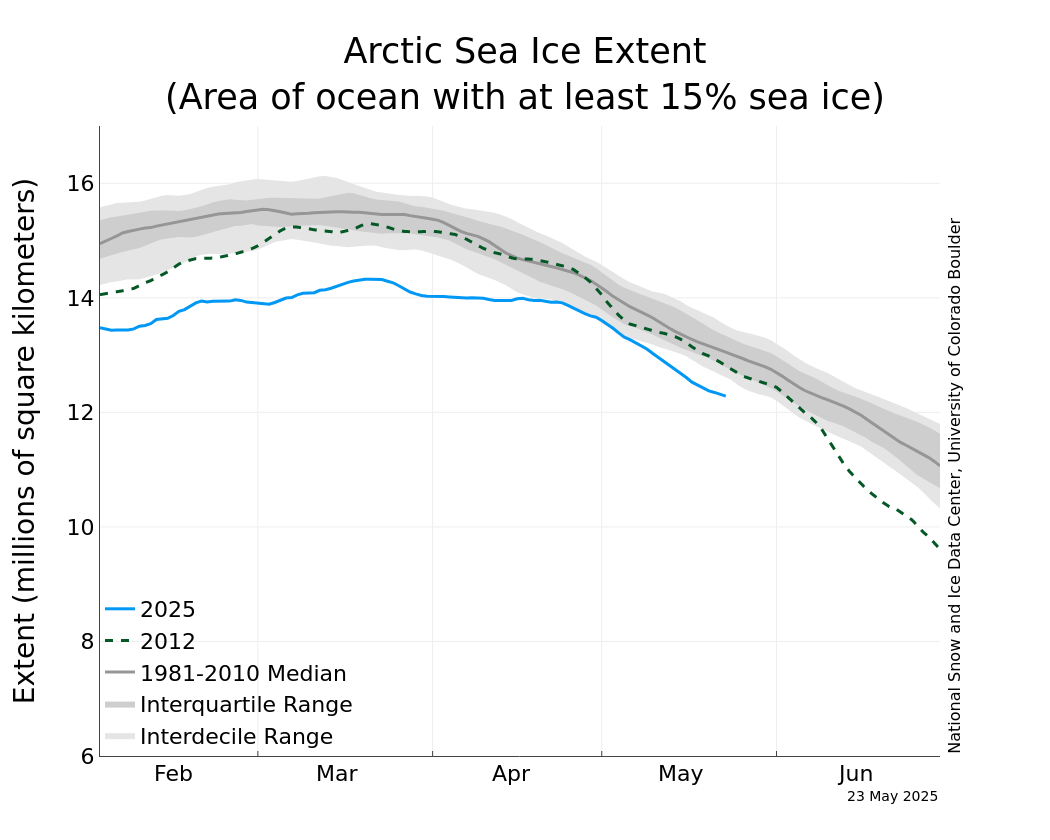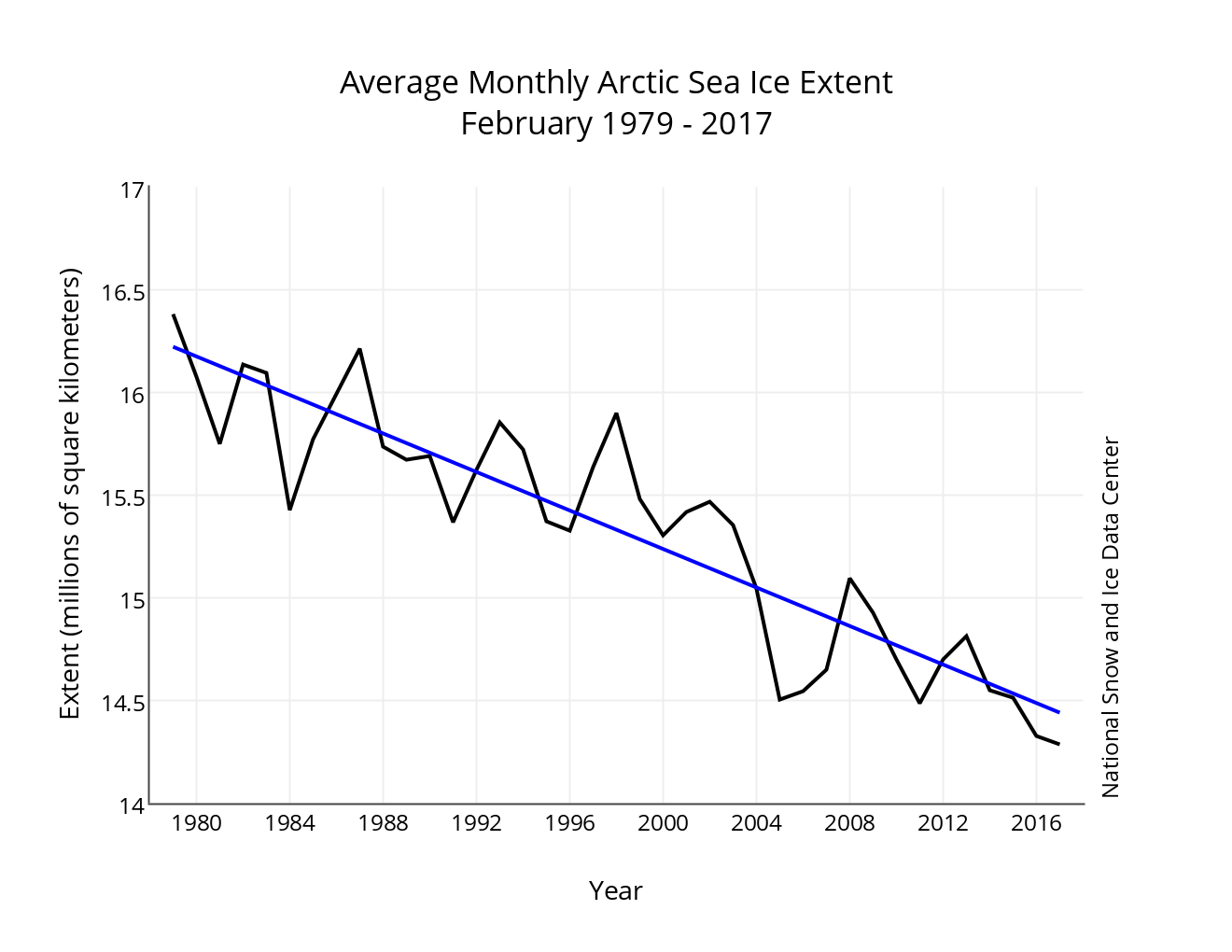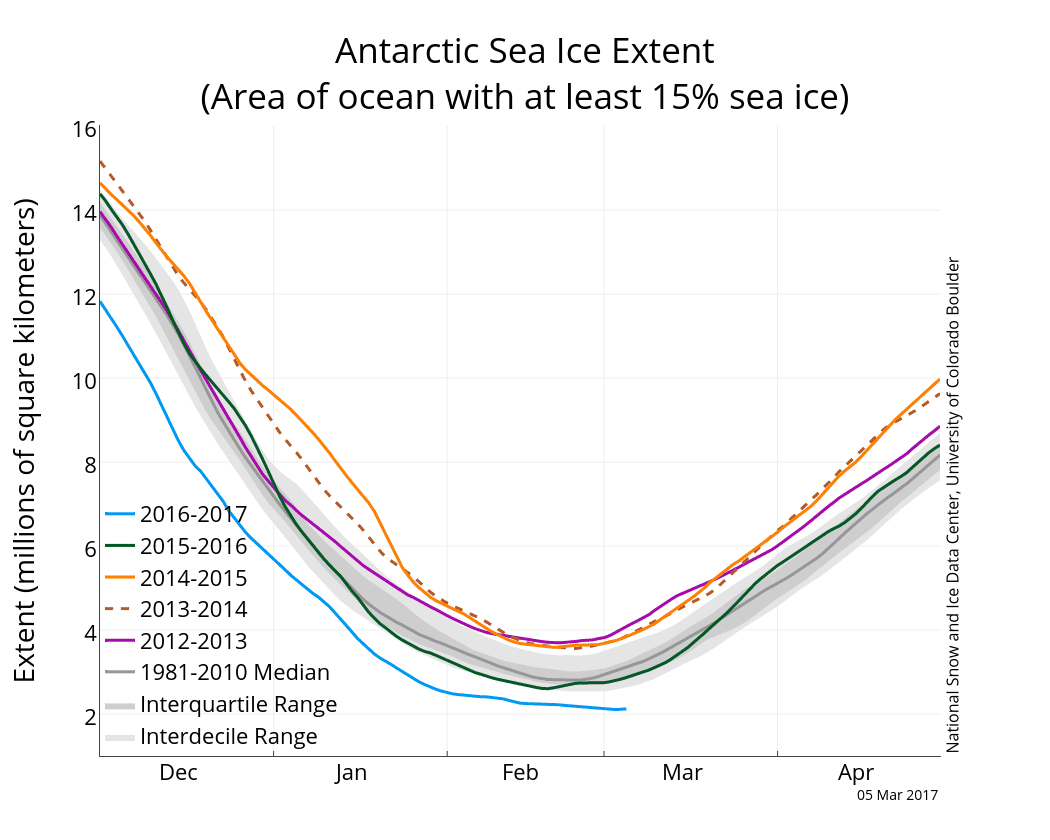Everything above 0 Kelvin radiates heat. Everything nearby is impacted by the photons radiated. Now the cold object gets a lot more photons than it is radiating, so is warmed. The warm object gets far less photons than it is radiating, so cools. Simple physics.
And the subject of this thread is arctic ice, which is rapidly declining. And this year, we may see a virtually ice free Arctic Ocean for a short time.

Arctic Sea Ice News and Analysis | Sea ice data updated daily with one-day lag
It appears that the ice has started it's downward trend. At at least three standard deviations below the average. Best hope for a very cold spring in the Arctic.
I'm confused. The mean and confidence levels are derived for just 29 years of observation in that analysis? What makes ANYONE SUSPECT that particular period is a "polar normal"? All this says is that polar ice is in a FIVE YEAR decline..
If you went back and could move the Median 20 years earlier it wouldn't help much because 30 years of observation is NOT SUFFICIENT on a climate scale to be calling ANYTHING "normal"...




